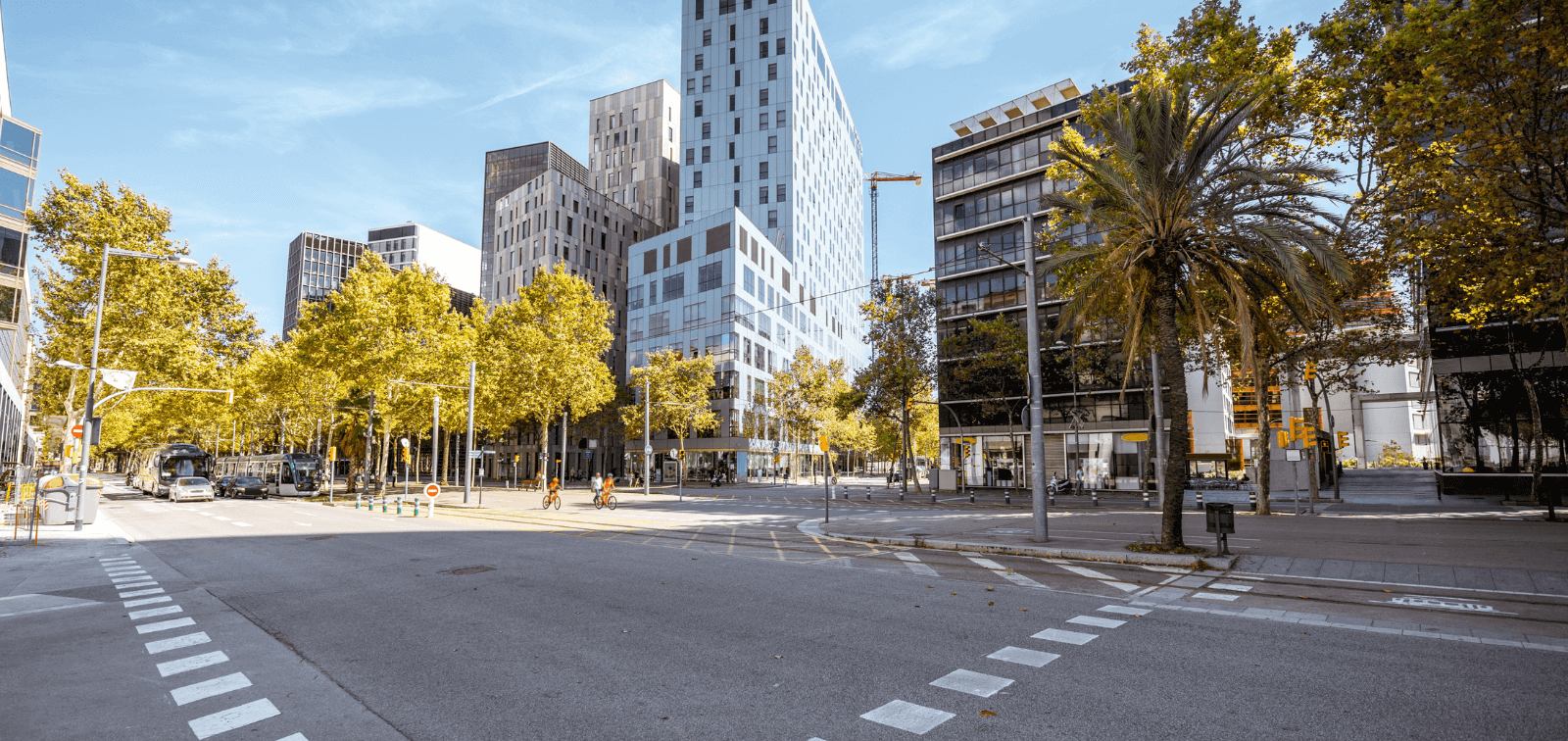According to a modeling study published in The Lancet and spearheaded by the Barcelona Institute for Global Health (ISGlobal), an institution supported by “la Caixa” Foundation, urban heat islands cause more than 4% of deaths in cities during the summer months, and one-third of these deaths could be avoided by reaching a tree cover of 30%.

Image Credit: Canva
The study’s findings, based on data from 93 European cities, highlight the significant benefits of planting more trees in cities to mitigate the effects of climate change.
Heat exposure has been linked to premature death, cardiorespiratory disease, and hospitalizations. This is especially true during heat waves, but it also happens during moderately high summer temperatures. Cities are particularly vulnerable to rising temperatures.
Less vegetation increased population density, and impenetrable surfaces for buildings and roads, including asphalt, all contribute to a temperature difference between the city and its surroundings, a phenomenon known as an urban heat island. This effect is anticipated to aggravate over the next decades due to ongoing global warming and urbanization.
Predictions based on current emissions reveal that heat-related illness and death will become a bigger burden to our health services over the next decades.
Tamara Iungman, Study First Author and Researcher, Barcelona Institute for Global Health
Between June and August 2015, an international group led by Mark Nieuwenhuijsen, Director of ISGlobal’s Urban Planning, Environment, and Health Initiative, predicted mortality rates of residents over the age of 20 in 93 European cities (a total of 57 million inhabitants), and gathered information on daily rural and urban temperatures for each city.
The analyses were carried out at a high resolution (areas of 250 m × 250 m). They began by simulating a hypothetical scenario without an urban heat island to predict premature mortality. Second, they calculated the temperature reduction obtained by increasing tree cover by 30%, as well as the related deaths that could be avoided.
Our goal is to inform local decision-makers about the benefits of integrating green areas into all neighborhoods in order to promote more sustainable, resilient, and healthy urban environments.
Mark Nieuwenhuijsen, Director, Urban Planning, Environment and Health Initiative, Barcelona Institute for Global Health
The Protective Effect of Trees
According to the findings, cities were 1.5 °C warmer than the surrounding countryside on average from June to August 2015. Hotter urban temperatures were responsible for 6,700 premature deaths, accounting for 4.3% of total mortality during the summer months and 1.8% of year-round mortality.
One-third of these deaths (2,644) could have been avoided by increasing tree cover by up to 30%, thereby lowering temperatures. Overall, cities in Southern and Eastern Europe had the highest excess heat mortality rates, with these cities profiting the most from increased tree cover.
The study emphasizes the significant benefits of planting more trees in cities, though the authors acknowledge that due to the design of some cities, this can be difficult, and that tree planting must be coupled with other initiatives like green roofs or other temperature-reducing alternatives.
Our results also show the need to preserve and maintain the trees that we already have because they are a valuable resource and it takes a long time to grow new trees. It is not only about increasing trees in the city, it is also about how they are distributed.
Mark Nieuwenhuijsen, Director, Urban Planning, Environment and Health Initiative, Barcelona Institute for Global Health
Because population data for later years were not available, the analyses were limited to 2015, but as Iungman points out, the study provides valuable information for adapting our cities and making them more resilient to the health effects of climate change. “Here we only looked at the cooling effect of trees, but making cities greener has many other health benefits, including longer life expectancy, fewer mental health problems, and better cognitive functioning,” she notes.
“Vulnerability to heat changes from city to city depending on several factors. Understanding the benefits of policies such as increasing tree cover can help inform action to reduce risks and prevent avoidable deaths, especially with climate change,” concluded Antonio Gasparrini, Professor of Biostatistics and Epidemiology at the London School of Hygiene & Tropical Medicine (LSHTM) and one of the authors of the study.
Journal Reference
Iungman T., et al. (2023) Cooling cities through urban green infrastructure: a health impact assessment of European cities. The Lancet. doi.org/10.1016/S0140-6736(22)02585-5.